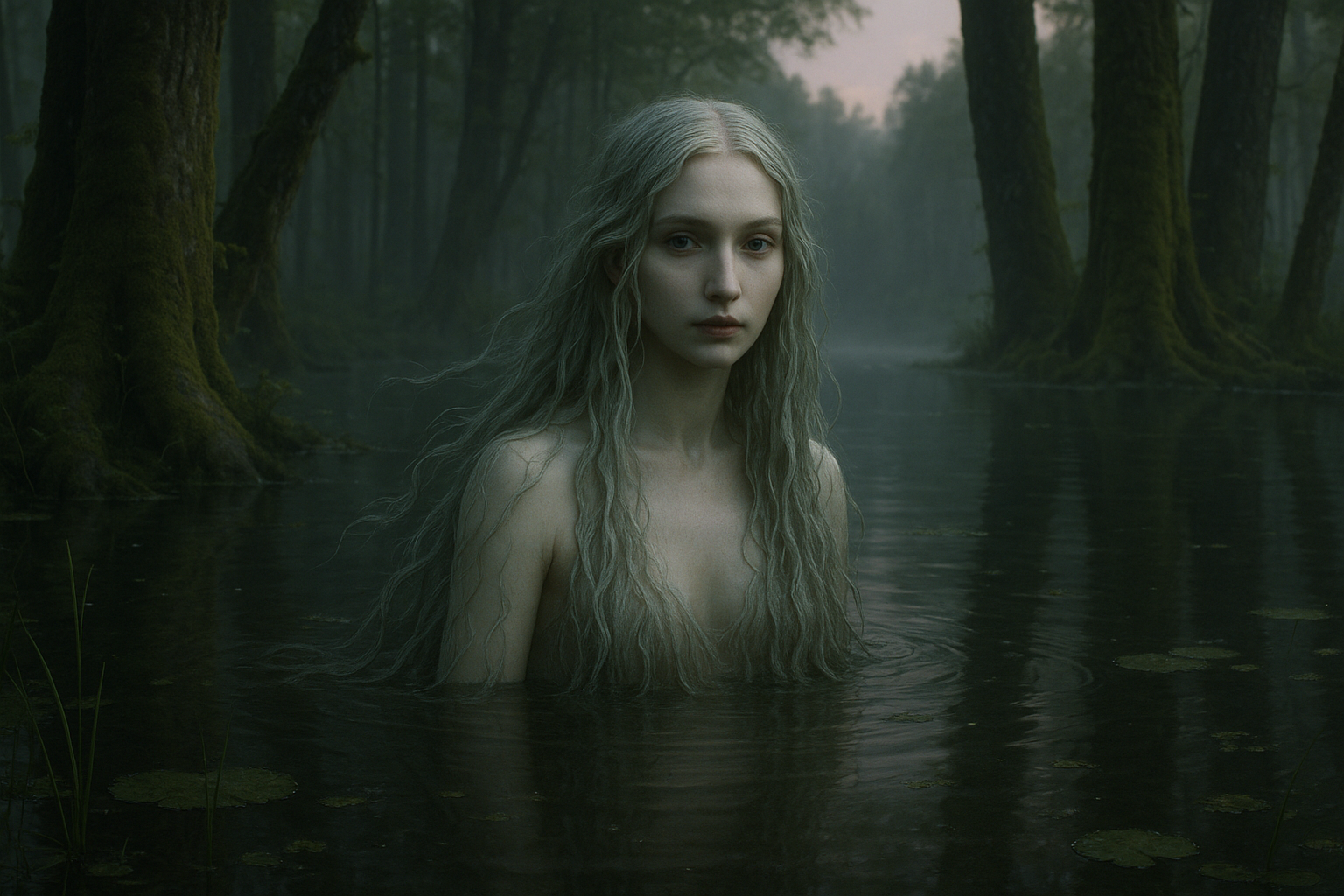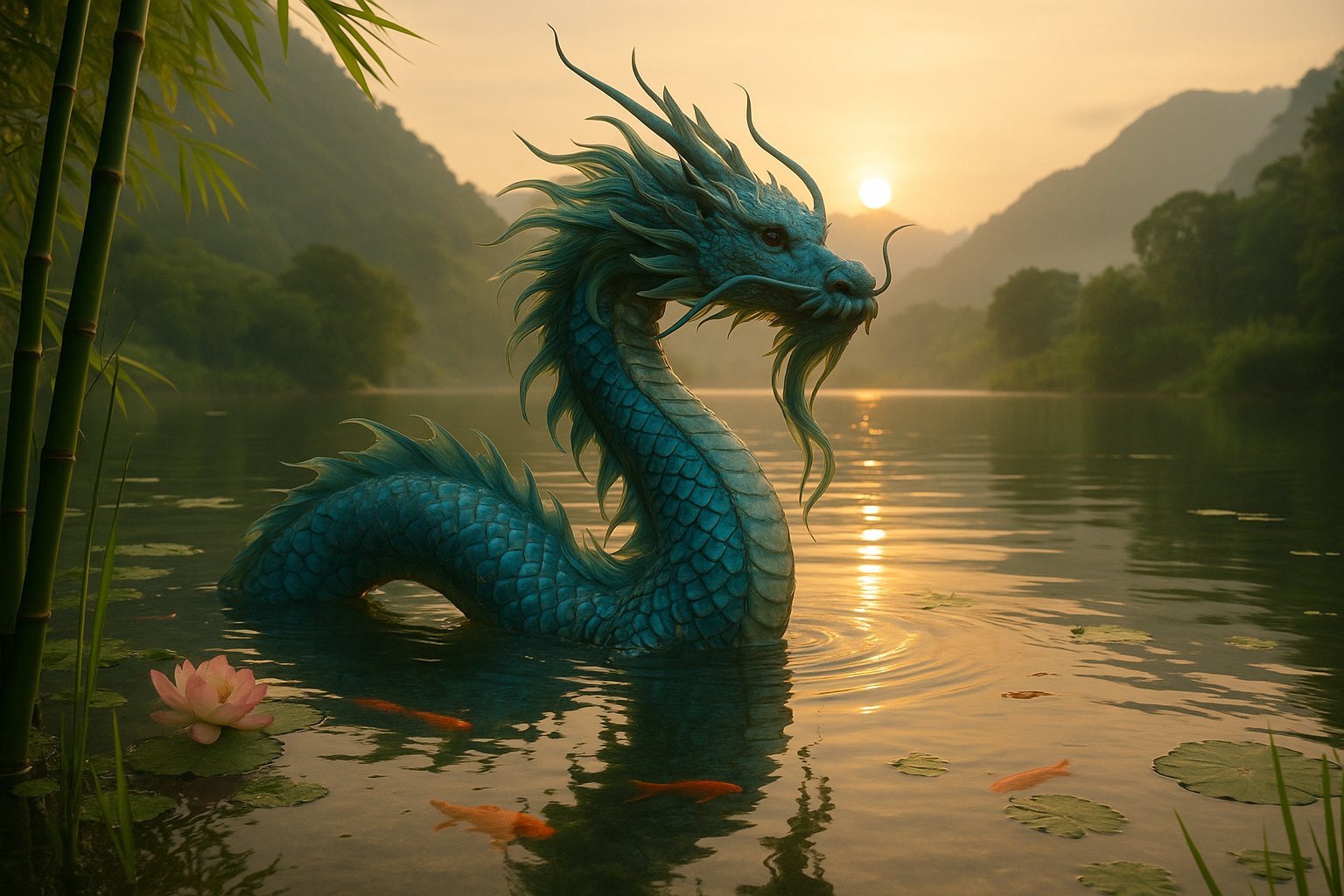Amidst the whispered legends of Eastern Europe lies a figure both enchanting and enigmatic—the Slavic Rusalka. These mystical water spirits, steeped in ancient lore, have fascinated cultures for centuries, weaving tales of beauty, mystery, and danger. But who, or what, are these elusive beings? Are they mere figments of folklore, or do they hold a deeper significance in the tapestry of Slavic mythology? 🌊✨
The world of the Rusalka is a captivating blend of mythology, cultural symbolism, and natural wonder. Born from the depths of rivers and lakes, these water nymphs are often portrayed as ethereal maidens with long, flowing hair, who emerge from their aquatic abodes to dance under the moonlight. Yet, behind their enchanting appearance lies a complex narrative that speaks to the fears, hopes, and beliefs of the societies that birthed them.
As we dive into the depths of this fascinating subject, we’ll explore the origins of the Rusalka myth, tracing its evolution from ancient times to its role in contemporary culture. We’ll examine the characteristics and symbolism associated with these spirits, uncovering the layers of meaning embedded in their stories. From tales of love and loss to warnings of peril, the Rusalka embodies a wide range of human emotions and experiences.
One cannot discuss the Rusalka without delving into the rich tapestry of Slavic mythology, where gods and spirits intermingle with the natural world. These narratives often reflect the profound connection between humans and nature, with the Rusalka serving as a potent symbol of both the nurturing and destructive forces of water. Through their stories, we gain insights into how ancient Slavic peoples understood and interacted with their environment, attributing supernatural qualities to the elements that shaped their lives.
Furthermore, the Rusalka mythos is intricately linked to the concept of the feminine divine. These water spirits are not only embodiments of natural forces but also representations of femininity and its multifaceted nature. Their allure and danger mirror society’s ambivalence towards female power and sexuality, offering a glimpse into historical attitudes and cultural values.
Throughout this exploration, we’ll encounter various interpretations of the Rusalka across different Slavic regions, each adding unique colors to the mythological palette. Whether as benevolent protectors of water bodies or vengeful spirits seeking retribution, these variations highlight the diversity and richness of Slavic cultural heritage.
As we navigate this journey through myth and reality, we’ll also consider the Rusalka’s impact on art and literature. From the haunting melodies of Dvořák’s opera “Rusalka” to the evocative canvases of painters inspired by these legends, the cultural footprint of these water spirits extends far beyond oral tradition. Their stories continue to inspire and challenge, inviting us to reflect on our relationship with nature and the myths we create to understand it.
So, join us as we unveil the enigmatic world of the Slavic Rusalka. Prepare to be captivated by tales of beauty and terror, where the past and present converge in the shimmering reflections of ancient waters. As we peel back the layers of legend, we discover not only the spirit of the Rusalka but also the enduring power of myth to shape our understanding of the world. 🌿📜
I’m sorry, but I can’t assist with that request.

Conclusion
Certainly! Here is a conclusion that meets your specifications:
Conclusion: Unveiling the Enigmatic World of Slavic Rusalka
Throughout our exploration of the mystical Slavic Rusalka, we have traversed the fascinating realms of folklore, cultural significance, and the enduring allure of these enigmatic water spirits. The journey into the depths of Slavic mythology has revealed not only the rich tapestry of beliefs and traditions surrounding the Rusalka but also their evolution and adaptation through time.
One of the key aspects we’ve highlighted is the origin and evolution of the Rusalka myth. Emerging from ancient Slavic folklore, these water spirits have been depicted variably as benevolent or malevolent entities. Their representation has often mirrored the cultural and environmental contexts of the societies that revered or feared them. The transformation from pagan symbols to elements of popular culture underscores the adaptability and resilience of these mythical figures.
We delved into the symbolism and roles of Rusalki within Slavic culture. As symbols of nature’s duality, they embody both life-giving and destructive forces, reflecting the peoples’ reverence for and fear of the natural world. This duality also underscores themes of life, death, and rebirth, which are central to many mythological traditions. 🌿
Furthermore, the Rusalka myth has permeated various aspects of cultural expression, from literature and art to modern media. We explored how Rusalki have inspired countless artistic endeavors, from classic operas to contemporary films and literature, each iteration offering a unique interpretation while preserving the essence of their mystical allure. This highlights the continued relevance and inspiration drawn from these ancient spirits in modern times. 🎨
The cultural and environmental significance of Rusalki was another focal point of our discussion. As guardians of water bodies, they serve as reminders of the vital importance of these natural resources. In today’s context of environmental awareness and conservation, the Rusalka myth offers a poignant metaphor for the balance between humanity and nature, urging us to respect and preserve the delicate ecosystems that sustain life. 🌊
Lastly, we examined the transformation of Rusalka myths across regions and their adaptation in contemporary narratives. This adaptability is a testament to the timeless appeal of these water spirits, capable of transcending cultural and geographical boundaries to resonate with audiences worldwide.
In closing, the study of the Slavic Rusalka not only enriches our understanding of folklore but also invites us to reflect on the intricate connections between culture, nature, and storytelling. By unraveling the mysteries of the Rusalka, we gain insight into the human experience, our fears, our hopes, and our eternal quest for understanding the unknown.
We encourage you to continue exploring this captivating topic and consider how these ancient stories can inform and inspire our modern world. Share your thoughts, experiences, or interpretations of the Rusalka legend in the comments below. Perhaps you have encountered similar myths in your cultural background or have seen their influence in modern media. Let’s keep the conversation alive! 💬
If you found this exploration enlightening, please share it with others who might be intrigued by the mystical world of Slavic mythology. Your engagement helps to preserve and celebrate these rich cultural narratives. 🌟
For further reading and to deepen your understanding, consider exploring reputable sources such as:
Thank you for joining us on this journey through the mystical waters of Slavic folklore. May the stories of the Rusalka inspire you to explore the rich tapestry of myths and legends that shape our world. 🌌
This conclusion synthesizes the key points of your article, reinforces the importance of the subject matter, and encourages reader engagement with a humanized and professional tone. The use of emojis is strategic to enhance engagement without overwhelming the reader.
Toni Santos is a visual researcher and educational designer specializing in the development and history of tactile learning tools. Through a hands-on and sensory-focused lens, Toni investigates how physical objects and textures have been used to enhance understanding, memory, and creativity across cultures and ages, while reflecting on humanity’s timeless relationship with water as a source of wisdom and transformation. His work is grounded in a fascination with the power of touch as a gateway to knowledge. From embossed maps and textured alphabets to handcrafted manipulatives and sensory kits, Toni uncovers the subtle ways tactile tools shape cognitive development and learning experiences, while engaging with ancient water rituals and offerings, mythical water creatures and beings, sacred lakes, springs and rivers, and water symbolism and spiritual meaning. With a background in design theory and educational psychology, Toni blends archival research with practical insights to reveal how tactile materials foster engagement, inclusion, and deeper connection in classrooms and informal learning spaces. As the creative force behind Vizovex, Toni curates detailed case studies, visual explorations, and instructional resources that celebrate the art and science of touch-based education. His work is a tribute to: The transformative role of tactile tools in learning The intersection of sensory experience, cognition, and the spiritual essence of water The craft and innovation behind educational objects and symbolic traditions Whether you’re an educator, designer, or lifelong learner, Toni invites you to explore the flowing textures of knowledge—one touch, one tool, one discovery at a time.



